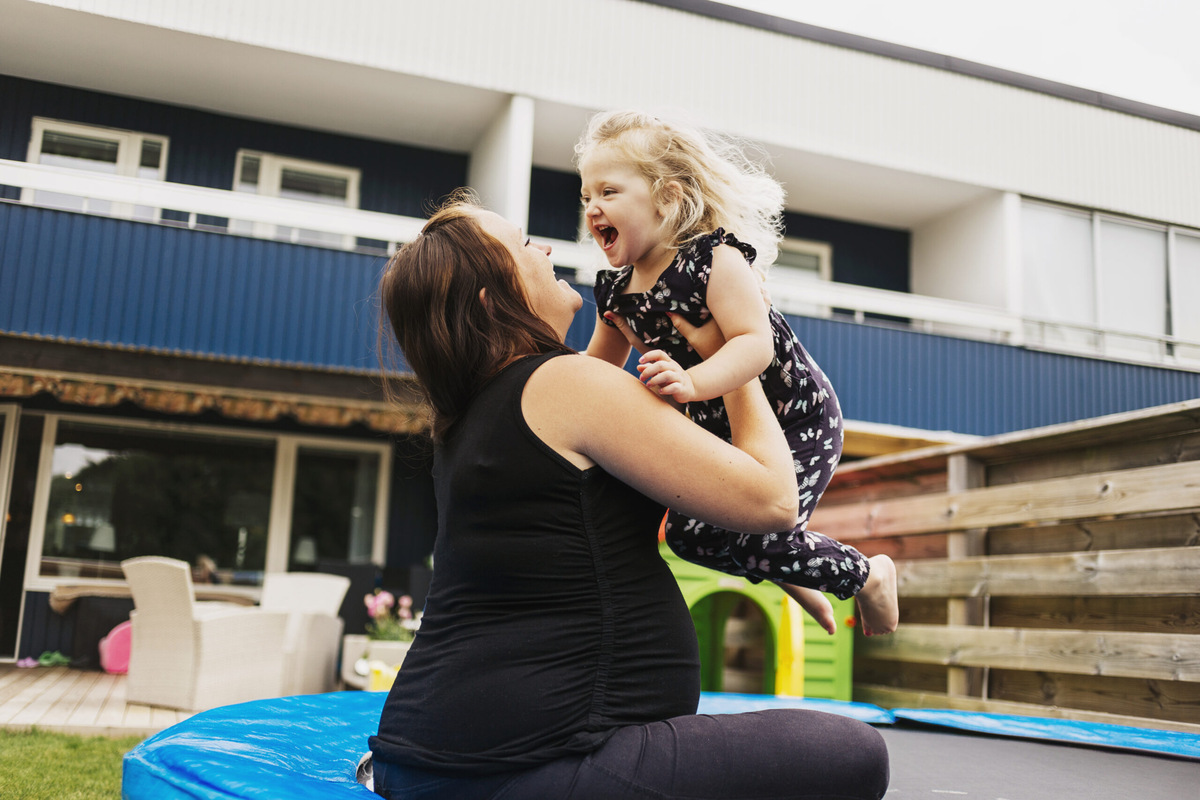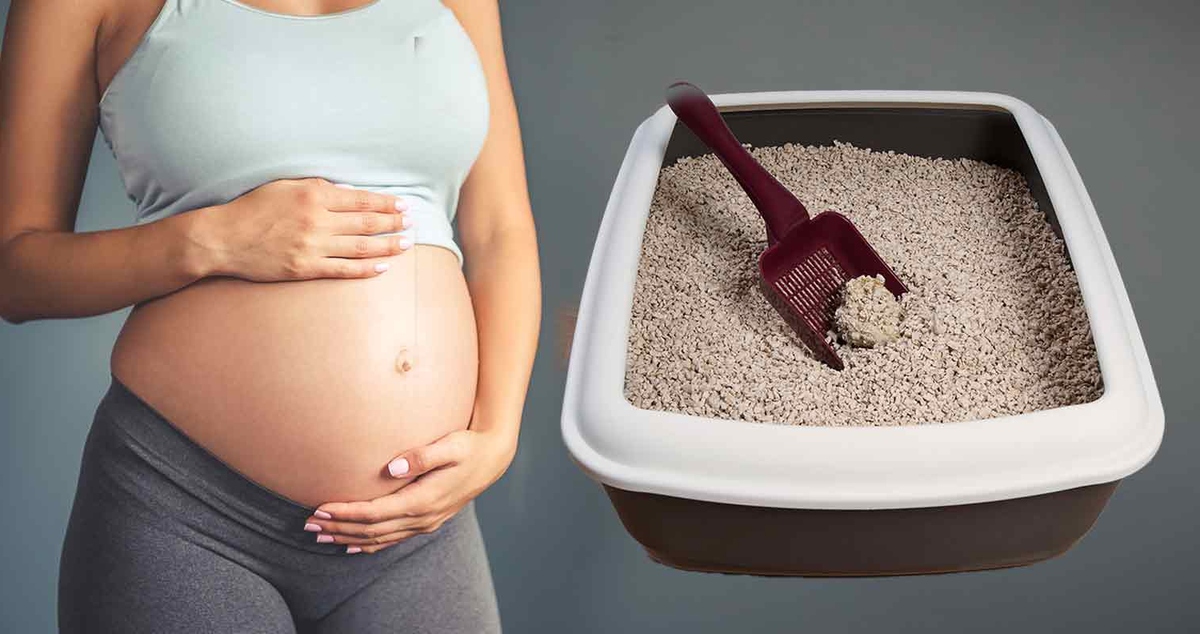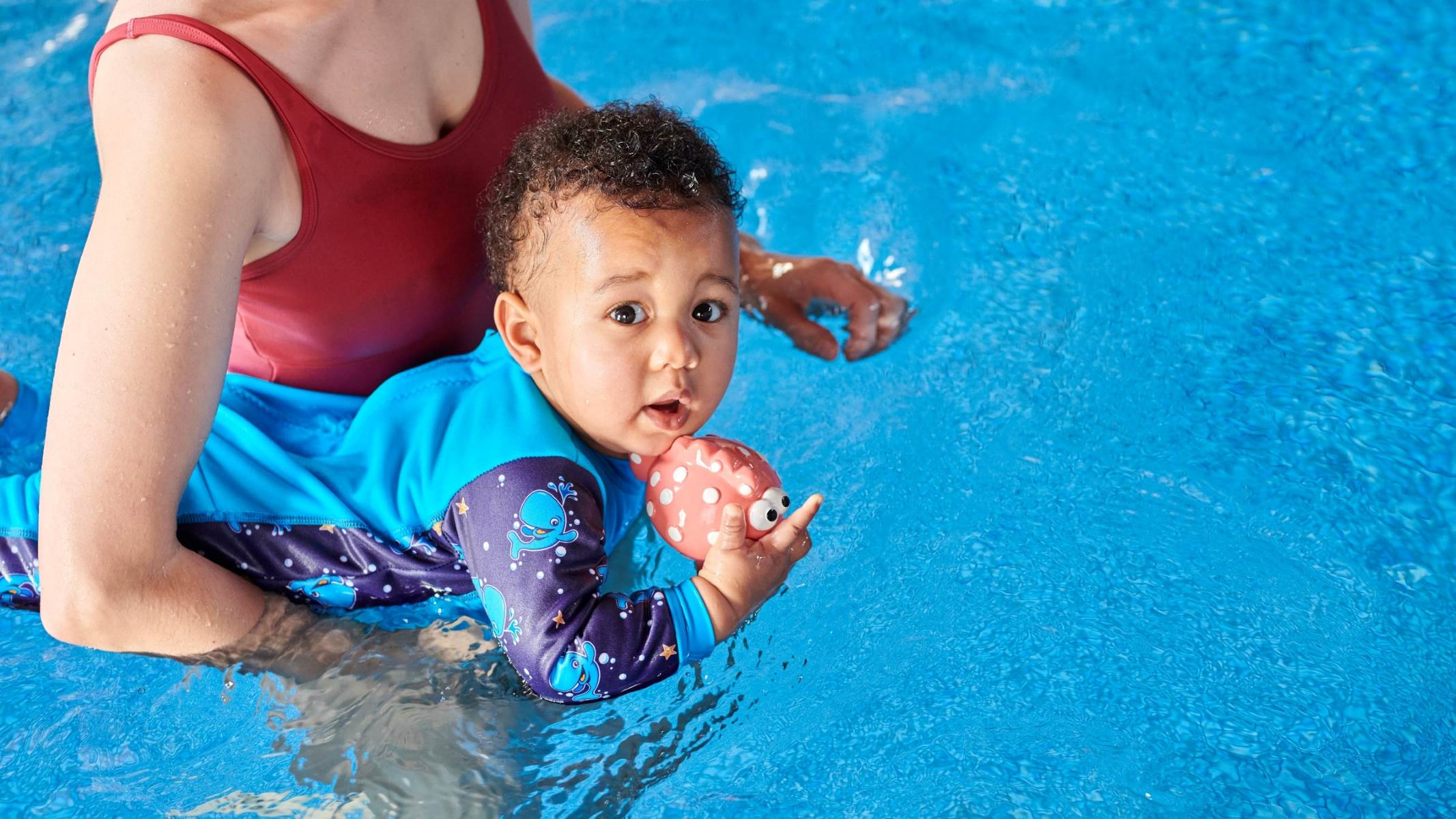Home>Gardening & Outdoor>Outdoor Recreation & Activities>Can You Go On A Trampoline When Pregnant


Outdoor Recreation & Activities
Can You Go On A Trampoline When Pregnant
Modified: January 4, 2024
Discover if it's safe to go on a trampoline during pregnancy and find other outdoor recreation and activities suitable for expectant mothers. Learn more here!
(Many of the links in this article redirect to a specific reviewed product. Your purchase of these products through affiliate links helps to generate commission for Storables.com, at no extra cost. Learn more)
Introduction
Trampolines are synonymous with fun and exhilaration, offering a unique way to bounce, soar, and defy gravity. However, the use of trampolines during pregnancy raises important questions about safety and potential risks. Expectant mothers often wonder whether it’s safe to partake in this activity while pregnant. In this comprehensive guide, we will delve into the topic of trampoline use during pregnancy, providing valuable insights and expert opinions to help you make an informed decision.
Throughout history, pregnancy has been viewed as a delicate period in a woman’s life, requiring extra care and consideration. As such, it’s natural for mothers-to-be to seek clarity on the safety of engaging in physical activities, including those as dynamic as trampolining. By exploring the potential risks, benefits, precautions, and expert opinions, we aim to equip you with the knowledge needed to navigate this unique aspect of pregnancy.
While the allure of bouncing on a trampoline may be tempting, it’s essential to prioritize the well-being of both the mother and the developing baby. With that in mind, let’s embark on a journey to understand the implications of trampoline use during pregnancy and explore the factors that should inform your decision-making process.
Key Takeaways:
- Trampolining during pregnancy can pose risks like falls and pelvic floor strain. Consult a healthcare provider and take precautions to prioritize safety and well-being.
- While trampolining offers benefits like low-impact exercise and mood enhancement, it’s crucial to weigh them against potential drawbacks and seek personalized guidance from healthcare professionals.
Read more: Can You Sleep In A Recliner When Pregnant
Understanding the Risks
When considering trampoline use during pregnancy, it’s crucial to acknowledge the potential risks associated with this activity. The nature of trampolining, characterized by sudden and vigorous movements, poses certain dangers that may be heightened during pregnancy.
One primary concern is the risk of falls and collisions while bouncing on a trampoline. As pregnancy progresses, a woman’s center of gravity shifts, and her balance may be compromised. This can increase the likelihood of losing stability and falling, potentially leading to injuries. Furthermore, the ligaments and joints undergo changes during pregnancy, which can affect stability and make expectant mothers more susceptible to accidents.
Another risk to consider is the impact of the bouncing motion on the pelvic floor muscles. The pelvic floor experiences added strain during pregnancy, and the repetitive bouncing on a trampoline could exacerbate this strain, potentially leading to discomfort or complications. Additionally, the jarring movements of trampolining may put pressure on the uterus, which could be a concern, especially in high-risk pregnancies.
Furthermore, the risk of abdominal trauma should be taken into account. The expanding uterus is a vital consideration, as it can make the abdomen more vulnerable to impact. In the event of a fall or collision, the uterus could be subjected to force, posing potential risks to the developing fetus.
It’s important to note that the risks associated with trampoline use during pregnancy are not limited to physical injuries. The emotional and psychological impact of engaging in an activity with inherent risks should also be considered. The stress and anxiety stemming from concerns about safety could have adverse effects on the expectant mother’s well-being and should not be overlooked.
Benefits and Drawbacks
As with many activities, trampolining during pregnancy presents a combination of potential benefits and drawbacks. Understanding these factors is essential for expectant mothers who are contemplating whether to engage in this activity.
Benefits:
- Physical Activity: Trampolining can provide a low-impact form of exercise, promoting cardiovascular health and overall physical well-being. The rhythmic bouncing motion can offer a gentle workout, aiding in maintaining fitness levels during pregnancy.
- Mood Enhancement: The release of endorphins during physical activity can contribute to improved mood and reduced stress levels. For expectant mothers experiencing emotional fluctuations, the mood-boosting effects of trampolining may be beneficial.
- Joint Support: The buoyancy of trampolining can alleviate pressure on joints, offering a reprieve from the discomfort often associated with the later stages of pregnancy.
Drawbacks:
- Risk of Injury: The potential for falls and collisions on a trampoline poses a significant risk, particularly as pregnancy progresses and balance becomes increasingly challenging.
- Pelvic Floor Strain: The repetitive bouncing motion may place additional strain on the pelvic floor muscles, potentially exacerbating existing discomfort or leading to complications.
- Uterine Pressure: The impact of bouncing on the uterus raises concerns about potential risks to the developing fetus, particularly in high-risk pregnancies.
It’s important to weigh these benefits and drawbacks carefully when considering trampoline use during pregnancy. While the potential advantages of physical activity and mood enhancement are appealing, they must be balanced against the inherent risks and potential impact on maternal and fetal well-being.
Read more: Can You Be In A Hot Tub When Pregnant
Precautions to Take
For expectant mothers who are contemplating trampoline use during pregnancy, taking appropriate precautions is paramount to minimize potential risks and prioritize safety. By adhering to specific guidelines and adopting a cautious approach, it may be possible to mitigate some of the concerns associated with trampolining while pregnant.
Consultation with Healthcare Provider:
Prior to engaging in trampoline activities during pregnancy, it is imperative to consult with a healthcare provider. A qualified obstetrician or midwife can provide personalized guidance based on the individual’s medical history, current health status, and any specific considerations related to the pregnancy.
Choose a Safe Environment:
When using a trampoline during pregnancy, select a well-maintained and properly assembled trampoline that is equipped with safety features such as a protective net enclosure. The trampoline surface should be free from tears or damage, and the surrounding area should be clear of hazards to minimize the risk of falls and injuries.
Supervision and Assistance:
Expectant mothers should never use a trampoline alone during pregnancy. Having a reliable and attentive individual present to provide assistance and support can be crucial in the event of any unexpected situations or the need for help with balance and stability.
Read more: Can You Burn Candles When Pregnant
Modified Trampoline Activities:
Adapting trampoline activities to reduce impact and minimize risks is advisable during pregnancy. This may involve avoiding high jumps, flips, or vigorous bouncing, and instead, focusing on gentle, controlled movements to maintain a low-impact exercise routine.
Listen to Your Body:
Being attuned to the body’s signals and limitations is essential. If any discomfort, pain, or unusual sensations arise while using the trampoline, it is important to cease the activity immediately and seek medical advice if necessary.
Regular Monitoring:
Throughout the pregnancy, it’s crucial to stay vigilant and monitor for any changes in physical well-being or potential complications that may be associated with trampoline use. Any concerns should be promptly addressed with a healthcare provider.
By incorporating these precautions into the decision-making process and the practice of trampolining during pregnancy, expectant mothers can strive to create a safer and more controlled environment for engaging in this activity.
Expert Opinions
Obtaining insights from medical professionals and experts in the field of obstetrics and gynecology can provide valuable perspectives on the topic of trampoline use during pregnancy. While individual experiences and circumstances vary, consulting expert opinions can offer informed guidance to expectant mothers considering this activity.
Many healthcare providers advise caution when it comes to trampolining during pregnancy. The potential risks associated with falls, pelvic floor strain, and uterine pressure are key considerations that prompt a conservative approach. Obstetricians and midwives often emphasize the importance of prioritizing safety and minimizing avoidable risks during pregnancy.
According to Dr. Sarah Thompson, an experienced obstetrician, “While physical activity is beneficial for expectant mothers, trampolining presents unique risks that should not be overlooked. The jarring impact and potential for falls make it a concern, especially as the pregnancy progresses. It’s crucial for pregnant women to engage in activities that offer exercise and mood benefits while minimizing the risk of injury.”
Dr. Michael Chen, a specialist in maternal-fetal medicine, underscores the need for personalized assessment. “Each pregnancy is unique, and the decision to use a trampoline should be made in consultation with a healthcare provider. Factors such as maternal health, pregnancy complications, and overall fitness levels should be taken into account. In some cases, alternative low-impact exercises may be more suitable for maintaining physical activity during pregnancy.”
While some experts advocate for caution and restraint, others emphasize the potential benefits of trampolining when approached with care. Dr. Lisa Evans, a certified midwife, acknowledges that, “For women with uncomplicated pregnancies and a history of regular trampoline use, modified and supervised trampolining may be feasible. It’s essential to prioritize safety, modify the intensity of activities, and be attentive to any signs of discomfort or strain.”
Overall, expert opinions converge on the importance of individualized assessment, caution, and safety when considering trampoline use during pregnancy. Expectant mothers are encouraged to engage in open and informed discussions with their healthcare providers to make decisions that align with their specific circumstances and well-being.
Read more: Can You Eat Poppy Seeds When Pregnant
Conclusion
As we conclude our exploration of trampoline use during pregnancy, it’s evident that this topic encompasses a spectrum of considerations, ranging from potential risks and benefits to expert opinions and precautions. The decision to engage in trampolining while pregnant is multifaceted, requiring careful evaluation and personalized assessment to ensure the well-being of both the expectant mother and the developing fetus.
Understanding the risks associated with trampoline use during pregnancy is essential, as it sheds light on the potential hazards that may arise from falls, pelvic floor strain, and uterine pressure. These factors underscore the importance of approaching trampolining with caution and informed awareness of the possible implications for maternal and fetal health.
While trampoline activities offer potential benefits such as low-impact exercise, mood enhancement, and joint support, it’s crucial to weigh these advantages against the inherent drawbacks, including the risk of injury, pelvic floor strain, and uterine pressure. The decision to engage in trampolining during pregnancy necessitates a balanced consideration of these factors to make an informed choice.
By embracing specific precautions, such as consulting with a healthcare provider, selecting a safe environment, and modifying trampoline activities, expectant mothers can strive to create a safer and more controlled approach to trampolining during pregnancy. These measures are instrumental in mitigating risks and prioritizing safety while maintaining physical activity.
Expert opinions from healthcare professionals underscore the need for personalized assessment and caution when considering trampoline use during pregnancy. While some advocate for restraint and alternative exercises, others acknowledge the potential for modified and supervised trampolining in specific cases. These insights highlight the importance of individualized guidance and informed decision-making based on the expectant mother’s unique circumstances.
In conclusion, the decision to go on a trampoline when pregnant is a nuanced and individualized choice that should be approached with careful deliberation and consideration of potential risks and benefits. By prioritizing safety, seeking expert guidance, and being attentive to personal well-being, expectant mothers can navigate this aspect of pregnancy with informed awareness and proactive measures to promote a healthy and fulfilling experience.
Frequently Asked Questions about Can You Go On A Trampoline When Pregnant
Was this page helpful?
At Storables.com, we guarantee accurate and reliable information. Our content, validated by Expert Board Contributors, is crafted following stringent Editorial Policies. We're committed to providing you with well-researched, expert-backed insights for all your informational needs.













0 thoughts on “Can You Go On A Trampoline When Pregnant”